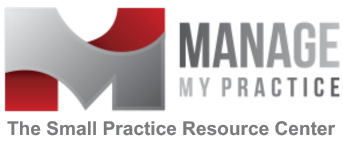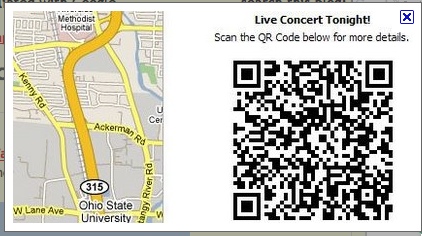A QR (Quick Response or Quick Read) Code is a two-dimensional matrix/bar code. Users hold their phone up to the code displayed on a sign, in a book, on a computer screen, tv, or almost anywhere. The phone camera snaps the code and takes the user to a website or video with more information – no typing needed – just point and click.
QR Codes are most common in Japan where they are currently the most popular type of two dimensional codes. (definition courtesy of Mashapedia = wikipedia and Mashable)
- Billboards advertising hospitals and medical groups will have QR codes so travelers can get more information about facilities or get directions to the closest Emergency Department, Urgent Care or family practice.
- Television advertising for pharmaceuticals will have QR codes so viewers can get more information on the spot.
- Healthcare facilities will have QR codes for all types of information and videos that providers and nurses will instruct patients to scan based on their health problems.
- Magazines and newspapers will have QR codes that readers can scan to get health information and health product coupons.
- Scanning QR codes when exercising or purchasing healthy foods will get you reward points with your health plan, your doctor or your employer.
- Comparison of foods that you should or should not buy in grocery stores based on your individual health problems will be easy when you scan the food’s QR codes.
- Caregivers will scan QR codes to receive information and videos for caring for their loved one at home.
- When purchasing over the counter medications, vitamins and supplements, you will scan the QR to make sure the medication isn’t contraindicated for any prescription medication you are taking.
- Scanning the QR code on food or cleaning products will let you know if they contain anything that you are allergic to.
- At health fairs, attendees will scan QR codes for more information on health topics and your facility and services.
- Disposable diapers will each come with a unique QR code that Moms (and babies) can scan to get childcare tips, games, songs and medical advice.
- Urgent Care facilities and Emergency Rooms will have QR codes for instant access to wait times.
- QR codes in healthcare facilities will let users download helpful mobile healthcare applications like those that help you control your chronic illness or lose weight.
- In print advertising for physicians, potential patients will scan the QR code to view the physicians talking about their background, their specialties and their desire to have you as a new patient!
- Referring patients to facilities or specialty practices will be much easier when patients scan the QR code for the referral and receive information, instructions and directions to the appointment.
- Healthcare facilities will give out t-shirts and carrying bags promoting their services and the QR codes on them will spread the word to others. (Yes, people will scan each others’ t-shirt codes!)
- Patients taking home holter monitors and CPAPs will be able to scan the QR code on the machine to get a “how-to” video on using it.
- Patients taking home sample medications from physician offices will have QR codes on the bag to scan to remember how they are to take the samples.
- Temporary tatoo QR codes will identify those patients who won’t wear identifying bracelets, have dementia, or tend to wander away.
- Hospital patients will scan the menu broadcast on their TV to order their daily meals.
- If you are going to be late to your doctor’s appointment, you will scan a QR code to email an alert to the office that you are on the way. (Wait, maybe that’s too easy!)
- Pharmacies will have QRs loaded with prescription prices by insurance company plan on their website so providers can compare different drugs and chose the best drug for the patient at the best price.




